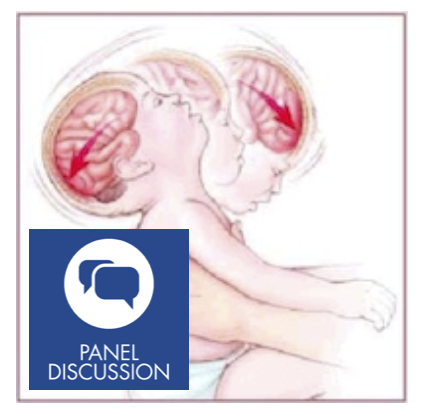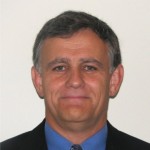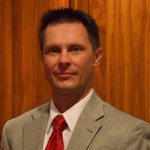 Much has been said about the science and medical findings in Shaken Baby Deaths. Now new, or not so new, opinions say the injuries to the brain which is used as fact evidence is not accurate. This panel discusses these issues and the investigation that goes into these deaths. The panel members are Craig Smith of C.B. Smith Training & Consulting Ltd. in Canada, Paul Parker of Parker Medicolegal Services in Arizona and Dr. Judy Melinek of the Alameda County Coroners Office in California. All panelist contact information is located below.
Much has been said about the science and medical findings in Shaken Baby Deaths. Now new, or not so new, opinions say the injuries to the brain which is used as fact evidence is not accurate. This panel discusses these issues and the investigation that goes into these deaths. The panel members are Craig Smith of C.B. Smith Training & Consulting Ltd. in Canada, Paul Parker of Parker Medicolegal Services in Arizona and Dr. Judy Melinek of the Alameda County Coroners Office in California. All panelist contact information is located below.
What started this discussion was a recent article written for CBS News that shed doubt on the medical findings of a Shaken Baby Cases and whether or not those finding have lead to the wrongful conviction of parents and care givers in these cases. That article is reposted below again for review. This panel does not and did not intend to discredit the writer of this article or CBS News. The intent was to discuss this opposing opinion and bring light to the need for accurate and complete investigation so that medical findings alone are not disputed. The panel does an amazing job at bringing out every aspect of this discussion.
Resource talked about on the show
Mr. Craig Smith referenced at report generated by the National District Attorney Association that outlines defense objections to head trauma injuries. That publication can be found here and downloaded for free.
National District Attorney Association
Panelist Contact Information
Questionable convictions in “shaken baby” cases?
Deborah Tuerkheimer is a Professor of Law at Northwestern University and the author of “Flawed Convictions: ‘Shaken Baby Syndrome’ and the Inertia of Injustice.” She also appears onSaturday’s “48 Hours” investigation into the case of Melissa Calusinski, a former day care provider who says she is wrongfully convicted in a toddler’s death. Here, Tuerkheimer weighs in on questionable convictions in child death cases. Her opinions do not necessarily reflect those of CBS News.
A few months ago, a 55-year-old Florida day care provider became yet another caregiver accused of shaking a toddler to death. The woman, who had worked with children for decades, denied harming the boy. But pediatricians concluded that this was a case of Shaken Baby Syndrome (SBS).
Even before an autopsy was performed, the state charged the woman with murder. She is being held in jail without bond and if convicted, she faces mandatory life in prison without the possibility of parole.
Based on the press reports, this case resembles many that I have written about in my book, Flawed Convictions: “Shaken Baby Syndrome” and the Inertia of Injustice. Without witnesses or external signs of abuse, the classic diagnosis of Shaken Baby Syndrome rests on three neurological symptoms, otherwise known as the “triad”: bleeding beneath the outermost layer of the brain, retinal bleeding, and brain swelling.
These symptoms are said to prove that a baby was violently shaken and, what’s more, to identify the abuser– whoever was present when the child was last lucid. Shaken Baby Syndrome is, in essence, a medical diagnosis of murder. In order to convict, prosecutors must rely entirely on the claims of science.
But the science has shifted. In recent years, there has been a growing consensus among experts that the neurological symptoms once viewed as conclusive evidence of abuse may well have natural causes, and that old brain injuries can re-bleed upon little or no impact.
In short, current science raises significant questions about the guilt of many caregivers convicted of shaking babies.
Reflecting real movement in the direction of doubt, this past spring, a federal judge in Chicago issued a ruling of “actual innocence” in the case of Jennifer Del Prete, a caregiver accused of shaking a baby in her care. (My book describes this trial in detail.) Del Prete was able to show that, based on what doctors now know about alternative causes of the triad, no reasonable jury could possibly find Del Prete guilty of murder. Indeed, according to the reviewing judge, a lack of evidentiary support for the theory of Shaken Baby Syndrome means that the diagnosis is arguably “more an article of faith than a proposition of science.”
Our legal system has been slow to absorb this new reality. As a consequence, innocent parents and caregivers remain incarcerated and, perhaps more inexplicably, prosecutions based solely on the “triad” symptoms continue even to this day. The cautionary tale of Shaken Baby Syndrome shows that our system is too inclined to stay the course, and awful injustices can result.
1 comment on “Panel Discussion – Wrongful Convictions in Shaken Baby Death Cases”
Leave a Reply
You must be logged in to post a comment.




Thank you for insightful discussion regarding limitations of science on a specific case study example. Evaluation of information coming from published literature can be a tricky endeavor for a multitude of reasons, from publication bias to confidence in the findings based on quality of the published material and evaluation of scientific evidence to which a specific case investigation is compared. This phenomenon can be observed in biomedical literature relating to clinical trial findings. Biomedical literature is an important source of information for physicians, who tend to rely on screening of published literature rather than source data (study registries). This source, however, can be somewhat misleading. Some clinical studies are published multiple times without clearly referring to data source (study ID). Publication of the same trial results multiple times in different journals artificially amplifies importance of a study finding. The consequence is flawed perception of importance of study findings due to artificially amplified signal strength whilst obscuring the full picture. In forensic science, publication bias is relevant for the assessment of effects of medication on behavior and decision-making immediately before death.